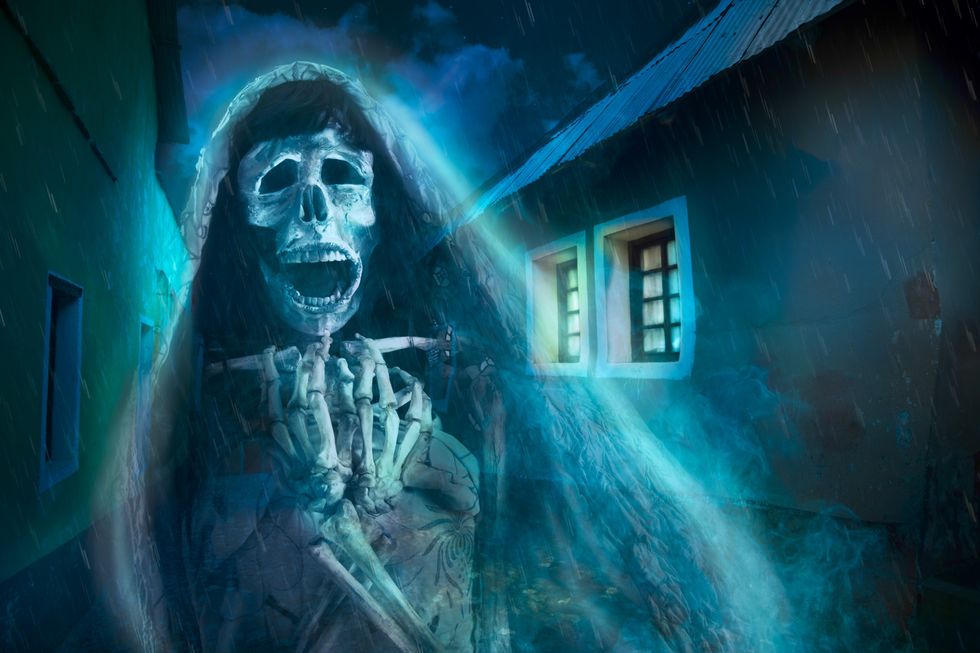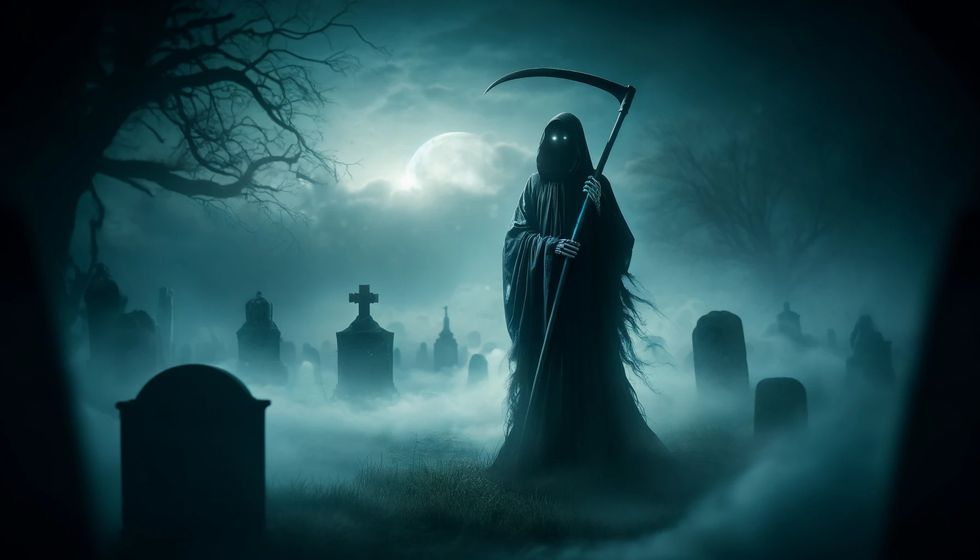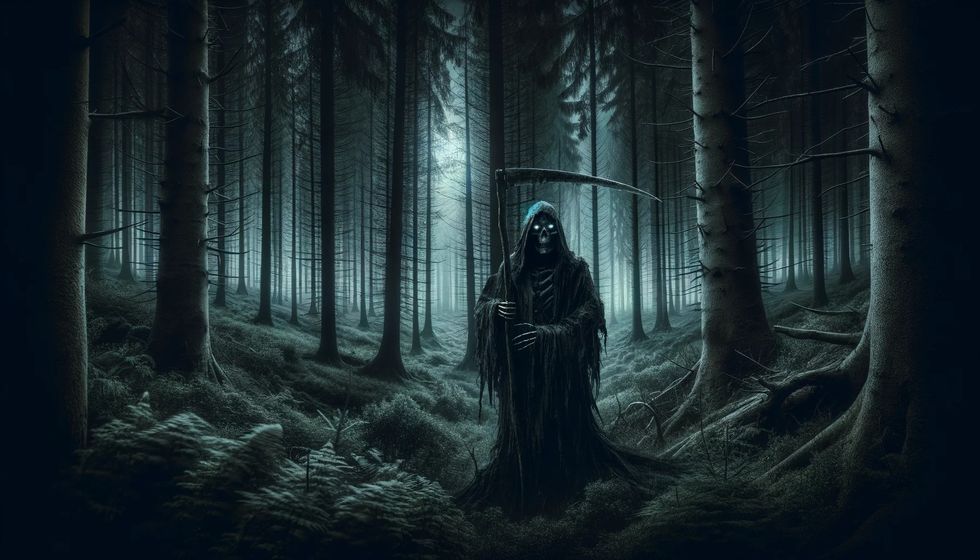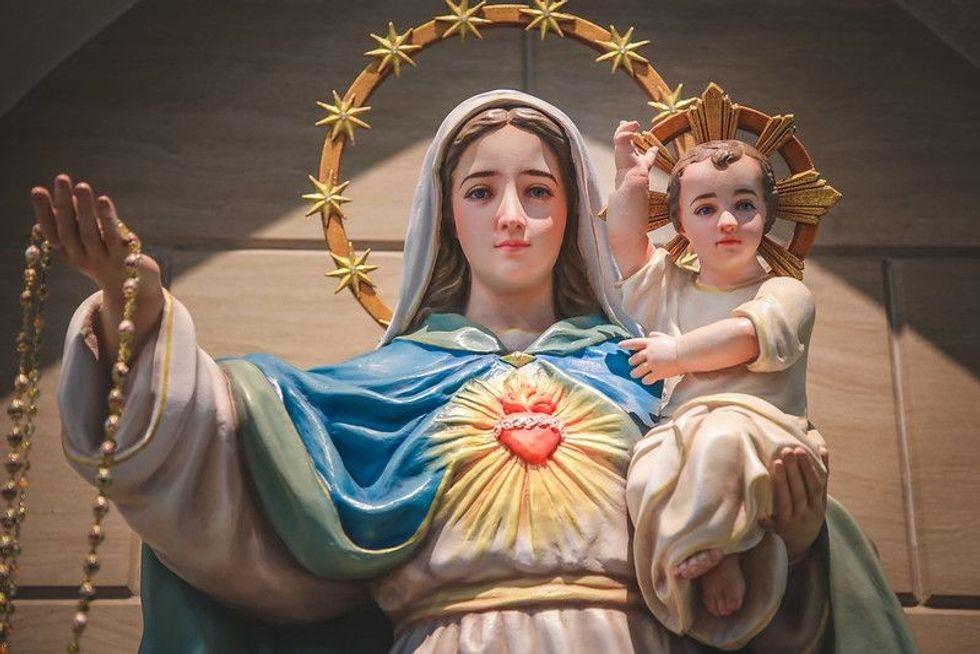Across the globe, the image of the Grim Reaper stands as a universal symbol of death. This iconic figure is known for its skeletal appearance in a dark cloak and wielding a 'scythe', a tool traditionally used for reaping crops but symbolically repurposed to 'reap' human souls.
It is generally said that the Grim Reaper serves as a boundary marker, who walks the thin line that separates the world of the living from that of the dead. However, this figure is not only an agent of death; it also plays a crucial role as a guide, escorting souls from the earthly realm to the afterlife and ensuring their safe passage to what lies beyond.
This concept of a death figure is not limited to any one culture or religion; it is a theme that is found across the world. This article provides a comprehensive list of Grim Reaper names from various cultures around the world, showcasing the diverse ways in which different societies perceive and personify death.
Reaper Names Related To Death From Greek Mythology

Greek mythology is filled with powerful deities who oversee the end of life. This section uncovers the names of those who carry the souls of the departed, guiding them to their final resting place. Each name has a story, connecting the dots between ancient beliefs and the mysteries of death.
1. Atropos (Greek origin): One of the three Moirai (Fates), she is the one who cuts the thread of life, determining the moment of death for every mortal.
2. Charon (Greek origin): The ferryman who carries souls across the rivers Styx and Acheron to the underworld, in exchange for a coin.
3. Cronus (Greek origin): Although not a direct personification of death, Cronus was a harvest god who carried a sickle and is sometimes conflated with Chronos, the personification of time, and is related to the imagery of the Grim Reaper carrying a scythe.
4. Erebus (Greek origin): Ancient deity representing the personification of darkness, his mists encircled the underworld.
5. Hades (Greek origin): Ruler of the underworld and brother to Zeus and Poseidon, overseeing the realm of the dead.
6. Hecate (Greek origin): Associated with magic, crossroads, and ghosts, she is also linked to the underworld and the spirits of the dead.
7. Hypnos (Greek origin): Twin brother of Thanatos, god of sleep, who is often associated with gentle passing, as sleep and death were closely related in Greek mythology.
8. Ker (Greek origin): Spirits of violent death, often referred to in the plural as Keres. They are associated with the battlefield and the dying moments of mortals.
9. Moros (Greek origin): Representation of doom, he leads mortals to their fated death.
10. Nemesis (Greek origin): The goddess of retribution, who could be seen as delivering the death that is due as a form of punishment or balance.
11. Nyx (Greek origin): The goddess of the night, mother of many death-related deities including Thanatos, and associated with the mysteries of death and the underworld.
12. Persephone (Greek origin): Queen of the underworld, abducted by Hades, her presence marks the seasons as she divides her time between the underworld and the earth.
13. Thanatos (Greek origin): symbolizes death in Greek mythology and is responsible for guiding the deceased to the underworld.
Reaper Names Related To Death From Egyptian Mythology
In the narratives of Egyptian mythology, the gods of death play important roles in the journey of souls to the afterlife. Here, you'll find the names of these beings, who not only represent death but also offer protection and guidance through the underworld's challenges.
14. Anubis (Egyptian origin): known as the Egyptian god of the dead, mummification, and the afterlife. Anubis is depicted as a man with the head of a jackal and is responsible for guiding souls to the afterlife and protecting graves.
15. Anpu (Egyptian origin): another name for Anubis, emphasizing his role as a protector and guide for the dead.
16. Duamutef (Egyptian origin): one of the four sons of Horus, responsible for the protection of the stomach of the deceased. The sons of Horus collectively ensured the safety and guidance of souls in the afterlife.
17. Hapi (Egyptian origin): another of the four sons of Horus, associated with the protection of the lungs of the deceased. Like his brothers, Hapi played a role in safeguarding the dead and assisting their passage through the underworld.
18. Imset (Egyptian origin): the fourth son of Horus, tasked with protecting the liver of the deceased. Together with his brothers, Imset also played a role in the journey of the dead through the underworld.
19. Nehebkau (Egyptian origin): an ancient snake associated with the afterlife. Nehebkau was believed to offer protection to the souls of the dead as they journeyed through the underworld.
20. Nephthys (Egyptian origin): sister of Osiris and Isis, and a guardian of the dead. Nephthys is associated with mourning, the night, and the protection of the dead as they journey through the underworld.
21. Osiris (Egyptian origin): god of the deceased and the afterlife. Osiris is a key figure in the afterlife, where he judges the souls of the dead. He was killed by his brother Seth but was resurrected by his wife, Isis.
22. Qebehsenuef (Egyptian origin): one of the four sons of Horus, tasked with protecting the intestines of the deceased. Each son of Horus was responsible for protecting a specific part of the deceased and guiding them in the afterlife.
23. Seker (Egyptian origin): falcon god of the Memphite necropolis, known as a patron of the living as well as a god of the dead. Seker is closely tied to Osiris in the afterlife.
Reaper Names Related To Death In Norse Mythology
Norse mythology introduces a unique set of figures related to death, blending valor with the inevitable end. This part of the article highlights the names and tales of those who escort warriors and common folk alike to their destinies beyond life.
24. Freyja (Norse origin): a goddess associated with love, fertility, war, and death. Freyja receives half of the warriors slain in battle, welcoming them to her hall, Sessrúmnir, in the afterlife.
25. Garmr (Norse origin): a hound that guards the gates of Helheim. Garmr is destined to fight against the god Tyr during Ragnarök, the end of the world, according to Norse mythology.
26. Hel (Norse origin): the goddess of the dead and the underworld, Helheim, where she receives a portion of the dead. Hel is depicted as half alive and half dead, representing life and death.
27. Hela (Norse origin): another name for Hel, emphasizing her role as the ruler of the underworld and the dead.
28. Móðguðr (Norse origin): the guardian of the bridge over the river Gjöll in the underworld. Móðguðr challenges those who wish to enter or leave Helheim, overseeing the passage of the dead.
29. Odin (Norse origin): the Allfather of the gods, who presides over Valhalla, the hall of the slain. Odin receives half of those who die in battle, the other half going to the goddess Freyja.
30. Rán (Norse origin): the sea goddess who collects the drowned in her net and takes them to her hall in the depths of the ocean. Rán is associated with death by drowning.
31. Skuld (Norse origin): one of the Norns, or fates, in Norse mythology. Skuld is associated with the future and is sometimes depicted as a Valkyrie, deciding who will die in battle.
32. Valkyries (Norse origin): choosers of the slain, these female figures are sent by Odin to battlefields to select those who are worthy of a place in Valhalla. They guide the souls of these warriors to the afterlife.
Reaper Names Related To Death In Roman Mythology
Roman mythology shares similarities with Greek myths but with distinctive characters and stories. This segment focuses on the deities associated with death, revealing how the Romans envisioned the passage from this life to the next through the names and roles of their gods.
33. Dis Pater (Roman origin): A god of the underworld, often associated with wealth and the dead, Dis Pater is considered another name or aspect of Pluto.
34. Lemures (Roman origin): restless spirits of the dead, particularly those not properly buried or vengeful.
35. Libitina (Roman origin): a goddess associated with funerals and burial. Her name became synonymous with death itself, and she was responsible for the proper conduct of funeral rites.
36. Manes (Roman origin): spirits of the ancestors, considered kind and protective. The Manes were worshipped and honored by their descendants, representing the souls of the deceased family members.
37. Mors (Roman origin): the personification of death itself. Mors is similar to the Greek Thanatos, representing the end of life.
38. Morta (Roman origin): one of the Parcae (the Roman Fates), specifically the one who cuts the thread of life, thus determining the moment of death for individuals.
39. Orcus (Roman origin): a god of the underworld associated with oaths and the punishment of the damned. Orcus is sometimes mistaken for Pluto but has a distinct role in dealing with the afterlife's disciplinary aspects.
40. Pluto (Roman origin): The god of the underworld and the dead, Pluto is the Roman counterpart to the Greek Hades.
Reaper Names From Japanese Mythology

Japanese mythology also offers a fascinating perspective on death and the afterlife, with certain beings tasked with guiding the deceased. Discover the names and responsibilities of these entities, shedding light on Japan's cultural views on life's end and what follows.
41. Gaki (Japanese origin): also known as 'hungry ghosts', these are spirits with an insatiable hunger for a particular substance or object, often associated with the consequences of bad deeds in life.
42. Izanami (Japanese origin): the goddess of both creation and death in Shinto mythology. After her death, she became the ruler of Yomi, the Japanese underworld, and is considered the first death god.
43. King Enma (Japanese origin): another name for Yama, the judge of the dead who decides the fate of souls in the afterlife.
44. Oni (Japanese origin): demonic creatures often associated with death and the afterlife. They are sometimes considered a type of Shinigami.
45. Shichinin Misaki (Japanese origin): a group of seven vengeful spirits that can cause misfortune and death. They are often the souls of those who died in battle or by accident and were not given proper funerary rites.
46. Shikome (Japanese origin): women who resided in Yomi and were encountered by Izanagi during his quest to retrieve Izanami. They are associated with death and decay.
47. Shinigami (Japanese origin): these are the 'death gods' or 'death spirits' who invite people to die, allowing the Shinigami to live another day.
48. Susanoo (Japanese origin): the storm god who is also associated with the afterlife. After being banished, he joins Izanami in Yomi and is sometimes linked to deathly aspects.
49. Yama (Japanese origin): also known as Enma or Emma-o, Yama is the ruler of the underworld in Buddhist belief, who judges the dead and is sometimes conflated with Shinigami in Japanese folklore.
FAQs
What are some common names for the Grim Reaper around the world?
The Grim Reaper is known by various names across different cultures. Some of these include Thanatos in Greek mythology, Hel in Norse mythology, Shinigami in Japanese culture, and Anubis in Egyptian mythology. Each name reflects the cultural understanding and representation of death.
Can the Grim Reaper be represented in non-threatening forms?
Yes, the Grim Reaper can be depicted in less intimidating forms depending on cultural narratives. For example, in Japanese culture, Shinigami can sometimes be portrayed with a more accessible, even humorous, demeanor.
Similarly, the character Ryuk from the manga and anime 'Death Note' is a Shinigami with a morbid sense of humor, showing that representations of death can vary widely.
Are there female representations of the Grim Reaper?
Yes, several cultures have female representations of death or entities similar to the Grim Reaper. For instance, La Muerte from 'The Book Of Life', is a stylish skeletal figure representing death in a less intimidating manner.
In Slavic folklore, Baba Yaga, while not a direct personification of death, is associated with the supernatural and can be seen as a guardian of the boundary between life and death.
Are there baby names that mean death, and what do they signify about the child or human life?
Yes, there are baby names that carry meanings related to death or are associated with evil spirits. These names often come from various mythologies and cultures, reflecting a deep connection to the mysteries of human life and the afterlife.
An example of one of the baby names meaning death is 'Mara'. It can mean death or sorrow in some cultures and is also the name of a demon in Buddhist mythology that represents temptation and death.
'Thanatos' is another example, derived from Greek mythology as the personification of death. Choosing such a name might signify a range of cultural, spiritual, or personal beliefs about the cycle of life and death, and the child's overall life.
This collection of reaper names from around the world offers an essential resource for scholars, writers, and anyone with an interest in global mythology. With names sourced from various cultures, this list sparks creativity in storytelling, enriches academic research, and satisfies curiosity about how different societies view the transition between life and death.
Exploring these names allows for a deeper appreciation of the different ways myths and legends contribute to the world's literary and cultural heritage. For writers, artists, and creators, this collection serves as an invaluable resource, inspiring the creation of compelling stories and characters that resonate with the universal theme of mortality.
Related Articles Around the Web











